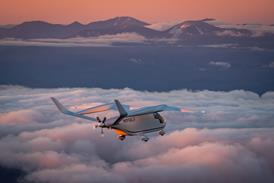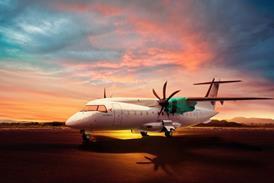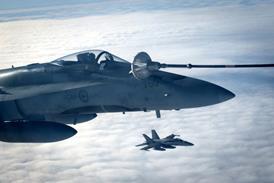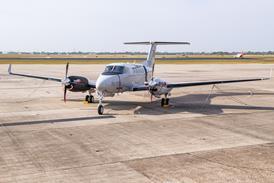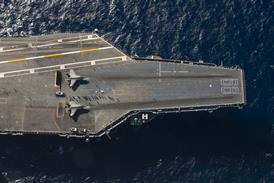Rockwell Collins (Hall A, stand 1011) is continuing to forge ahead with developments to its WXR-2100 Multiscan weather radar having recently received certification to install the system aboard the Airbus A320, A330 and A340.
 The WXR-2100 is a fully automatic radar providing weather detection out to 590km (320nm). It also includes overflight protection, which helps crews avoid inadvertent penetration of thunderstorm tops, one of the leading causes of unexpected turbulence. The system uses a combination of lower and upper beams information and computer memory to keep the thunderstorm top in view until it passes behind the aircraft. The radar also incorporates real-time ground clutter suppression.
The WXR-2100 is a fully automatic radar providing weather detection out to 590km (320nm). It also includes overflight protection, which helps crews avoid inadvertent penetration of thunderstorm tops, one of the leading causes of unexpected turbulence. The system uses a combination of lower and upper beams information and computer memory to keep the thunderstorm top in view until it passes behind the aircraft. The radar also incorporates real-time ground clutter suppression.Steve Paramore, director of systems marketing at Rockwell Collins, says that the company is now reaping the benefits of four years’ customer experience and development with the system.
“Multiscan is moving from being just a rain gauge to a fully automatic hazard detector,” he says.
One of the recent developments has been work on enhanced turbulence detection.
“We won the NASA/Delta enhanced turbulence programme and have been flying a version of Multiscan with enhanced turbulence on a Delta Boeing 737NG for two years now,” Paramore says.
“This has been gathering data and letting us fine-tune the turbulence algorithms, which will benefit all our customers when it is released as a software upgrade.
“The next upgrade will also prioritise storms out front according to their threat by looking at the growth rate, convectivity and storm height.”
Rockwell Collins plans to release these features as a software upgrade in 2008.
The company is also benefiting from research work on geographical weather patterns. For example, a storm over land in Europe is going to be very different to a storm over the Pacific. Rockwell Collins has therefore worked on the radar’s ability to know where in the world the aircraft is and display its data accordingly.
“We were accused for years of making North American radars and we were guilty as charged. When we first flew our radar over the southern Pacific Ocean it was obvious that it needed to operate differently,” Paramore says.
“We started to look at the reflectivity of water in different regions and spent a considerable amount of time doing research. Then we came up with an enhancement that makes the radar work differently in different geographical locations.”
Rockwell Collins is also working with an unnamed educational institution in the USA to develop a worldwide solution to the problem.
“This will continue to evolve in the future – you can’t build a one size fits all solution,” Paramore says.
The WXR-2100 was recently selected by Air Asia and IndiGo, bringing the number of clients in the region to 24. Paramore says that Asia is the most significant area for sales, with a 70% capture rate over the last three to four years.
“One of our biggest selling points over the opposition is our solid reliability,” he says.
Source: Flight Daily News


